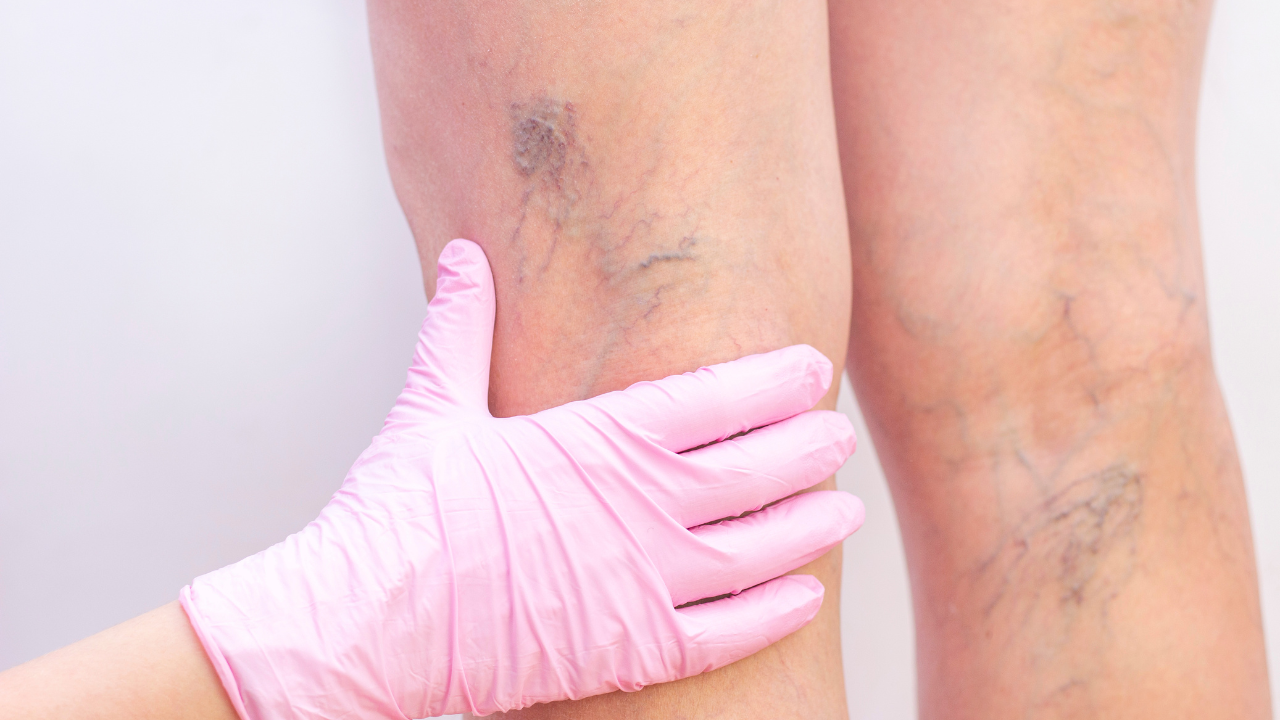-
news
-
Health
Why might crossing your legs not be the real cause behind varicose veins?
While varicose veins may sometimes seem like a cosmetic concern, they indicate underlying problems with blood flow.

Image – Canva
varicose veinsA common vascular condition, can affect anyone but is certainly more prevalent in individuals Lifestyle and genetic predispositionAlthough these enlarged and twisted veins, often seen on the legs, are sometimes dismissed as a cosmetic problem, they can cause discomfort and, in severe cases, complications if left untreated. .
We spoke to two experts, Dr Tapish Sahu, head of vascular and endovascular surgery at Manipal Hospital, Dwarka, New Delhi, and Dr Saurabh Juneja, director and head of CTVS at the Indian Spinal Injuries Centre, to understand the causes and signs. , and treatment options for varicose veins.
causes of varicose veins
Varicose veins occur when the valves inside the veins, which ensure one-way blood flow, become dysfunctional or damaged. This causes valvular reflux – a condition where blood pools in the veins, causing them to enlarge and become visible under the skin.
Dr. Sahu threw light on it hormonal changesespecially during pregnancy, obesityStanding for long periods of time, and a family history of weak nerves, are significant contributors. He also debunks the popular myth that crossing your legs can cause varicose veins. “The nerves are protected by subcutaneous tissues and musclesSo the real issue lies in the malfunction of the valves and not in the pressure caused by sitting cross-legged,” he explains.
Dr. Juneja says aging, sedentary lifestyle and obesity further increase the risk of developing varicose veins. “As we age, the walls and valves of the veins naturally weaken. pregnancy related hormonal changes And increased blood volume also contributes to this condition,” he explained.
recognizing signals
Common symptoms of varicose veins include:
- Dark purple or blue veins.
- Twisted and bulging veins.
- Pain or heaviness in legs.
- Swelling in lower legs.
- Cramps, especially at night.
Dr. Juneja advises that individuals with a family history, obesity, or sedentary habits should pay close attention to these signs.
Treatment and management options
According to Dr. Sahu and Dr. Juneja, early-stage varicose veins can often be managed with lifestyle changes. These include:
- exercising regularly improve blood circulation,
- Elevating the legs during rest to reduce pooling.
- One should avoid sitting or standing for long periods of time.
- Maintaining a healthy weight to reduce pressure on the veins.
In more severe cases, medical intervention may be necessary. Dr. Juneja outlines the following procedures:
- Sclerotherapy: Injection of a solution to cauterize and close the veins.
- Laser treatment: Non-invasive technique that uses light energy to remove veins.
- Radiofrequency or endovenous laser therapy (EVLT): Heat-based methods to close damaged veins.
- vein stripping or ligation: Surgical removal of veins in advanced cases.
- Ambulatory phlebectomy: Removing veins through small punctures in the skin.
Prompt recognition and management can prevent complications. If you notice symptoms or have risk factors, consult a vascular specialist for a comprehensive evaluation and tailored treatment plan.
Get the latest news live on Times Now with breaking news and top headlines from around the world.
obesity


